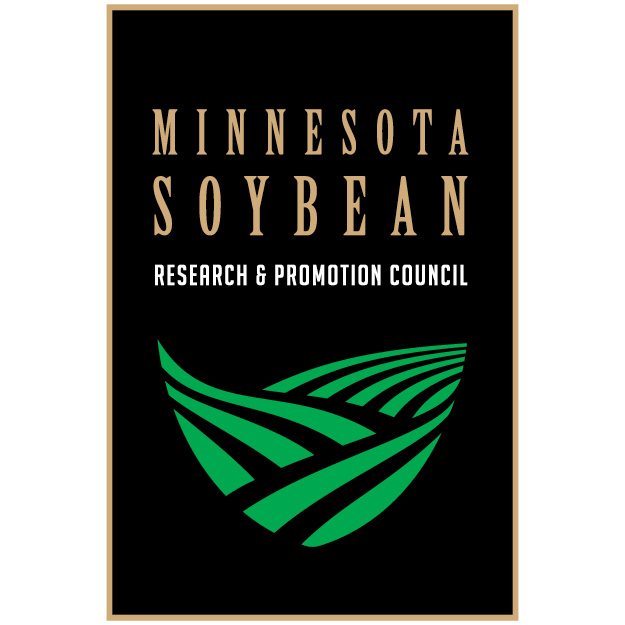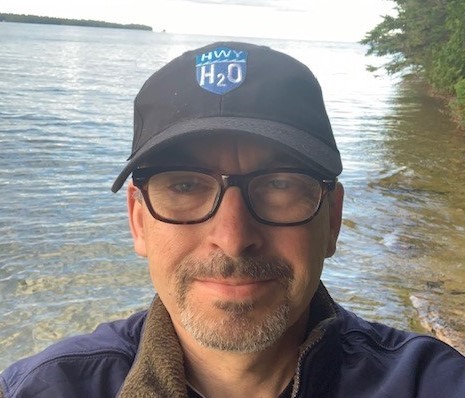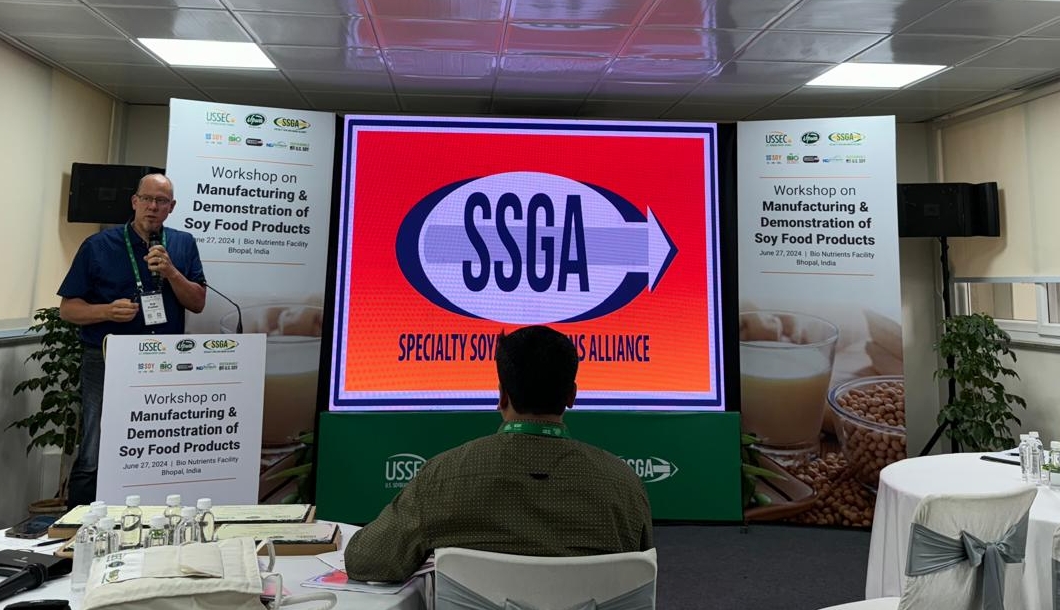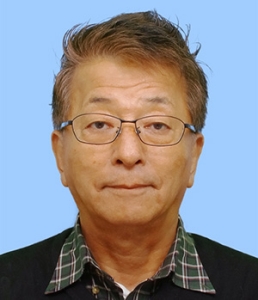Beginning with his first week as executive director of the Specialty Soya and Grains Alliance (SSGA), Eric Wenberg began opening new doors for the organization. But first, he helped the SSGA board approve its logo and membership dues.
“The board trusted me creating something new,” he said. “It’s a rare opportunity.”
His tenure with SSGA officially started in March 2019, when Wenberg used his connections in Washington, D.C., to help bring SSGA – a new organization created following the merger of the Midwest Shippers Association and the Northern Food Grade Soybean Association – to the Embassy of Japan.
“You could tell Eric was extremely well respected,” said Minnesota Soybean Growers Association Executive Director Joe Smentek, who joined Wenberg for the embassy visit. “He created a lot of opportunities for soybean farmers both in Minnesota and across the country.”
A lover of metaphors, Wenberg viewed SSGA’s humble beginnings and its subsequent growth and industry recognition from an aerial angle.
“Starting SSGA was like landing an aircraft on an aircraft carrier,” Wenberg said. “You realize you’re doing two difficult things at once. You’re flying an airplane and you’re landing on a deck that’s going up and down.”
Whether he was arranging embassy meetings, helping to launch SSGA’s U.S. Identity Preserved brandmark or communicating the dire effects of supply chain crises, Wenberg continued opening doors and landing planes for SSGA’s members throughout his 5 ½-year tenure.
At the end of September 2024, the longtime industry leader is retiring after an illustrious career in both the public and private sectors.
“It’s just a great time for transition,” Wenberg said. “We’re in a successful position with a trained staff who know their jobs with a marquee set of events that are now on the map and the calendar that people attend.”
Wenberg’s genial disposition and breadth of industry knowledge will be missed by colleagues.
“He’s such a rare bird, and I think others would say the same thing,” said Gary Williams, SSGA director of transportation and regulatory affairs. “The skillset that Eric has is really unique. You’ll find people who have been in the Foreign Ag Service and the government side of things, and some make the crossover to the association side, but what’s different about Eric is he can understand the commercial side. He can understand government and the organizational association world, and it’s really rare to find that.”
Shane Frederick, SSGA’s manager of strategic programs, said Wenberg’s small-ball approach transformed SSGA into a big player in the global identity preserved and transportation industries.
“Eric Wenberg might be the Billy Beane of agricultural associations,” Frederick said, referring to the general manager of the Oakland A’s baseball team who was made famous by the book and movie, “Moneyball.” “Under his leadership, a new and somewhat-small organization made a major impact on the industry around the world.”
Living the dream
Before joining SSGA, Wenberg completed a nearly 30-year career with USDA’s Foreign Agricultural Service (FAS), serving in American embassies in Ottawa, Pretoria, Warsaw and Moscow. During his FAS career, Wenberg worked abroad, assisting U.S. agricultural businesses export, negotiating trade agreements and settling disputes with foreign governments, while speaking and publishing reports on foreign agricultural conditions. He also served as assistant deputy administrator of Foreign Service Operations, directing 90 offices abroad. He was tasked with setting financial management and policy for Farm Bill foreign marketing programs. From 2002 to 2004, Wenberg represented FAS on the governing board of the American Foreign Service Association.
“Eric came to SSGA not knowing a whole lot about the IP business,” SSGA Chair Bob Sinner said. “He’s made a significant effort, learned all the aspects of our businesses and has really been a champion. I’ve seen him work day-to-day with such passion. He’s been such a student of our businesses.”
Phillip Shull, SSGA’s South Asia technical adviser, has been a colleague of Wenberg’s for around 30 years. He said his friend’s enthusiasm and grasp of complex issues never let up.
“Eric’s commitment to seeing the job done is another thing that drives him. He lives it; he’s not an 8-to-5 guy. He’s going to be dreaming about this,” Shull said. “The multifaceted aspect of his job is you’re not just doing the same thing. You do marketing and you do the policy, the management, the administration and the diplomacy of working with the government and the industry and with foreign dignitaries. It’s multidimensional.”
The COVID-19 pandemic hit a year after Wenberg joined SSGA, and just days after SSGA participated in the Northern Commodity Transportation Conference (now known as the SSGA-led Transportation Go!). The Minnesota-based organization shifted into remote, virtual operations. To Wenberg, the pandemic felt like another restart for SSGA.
“Of course, we work internationally, so we began to adopt the habit that we still are pretty accustomed to, which is being on video calls and conferences late at night,” he said. “The pandemic made us rethink our business functions.”
In the fall of 2020, SSGA – working on behalf of its members who export high-quality, identity preserved and specialty grains and oilseeds to help them meet the needs of their overseas customers – was one of the first organizations to sound the alarm about the global supply chain disruptions. Those advocacy efforts included educating legislators and media outreach and led to the 2022 passage of the bipartisan Ocean Shipping Reform Act, providing a more competitive global ocean shipping industry and relief to U.S. exporters. A press release issued by SSGA underscoring the effects of the crisis later earned a National Agri-Marketing Association award.
“We give people the data and information they need to make decisions,” Wenberg said. “We set up a series of educational outreach on transportation and the difficulties, the steps that the companies were going through to try and overcome the difficulties to continue to deliver products. That’s a very important role for an association, for an alliance like ours to take on. The goal is to pass on the difficult messages to the customer, and I’m very proud of the role that we played in that legislation passing with unanimous consent in the Senate.”
Sinner, a longtime SSGA board member and president of SB&B Foods, said Wenberg delivered for the industry time and time again.
“All of our members talk about a return on investment, and it’s sometimes very hard to measure. But membership in SSGA, that hasn’t been difficult. This has been a no brainer,” Sinner said. “This has been a situation where people have become members because they’ve seen and recognized how important the return on investment is for the things that we do at SSGA.”
Addressing transportation challenges and opportunities has remained a key SSGA priority. In addition to Transportation Go!, SSGA has hosted multiple trade missions with stakeholders and the Department of Transportation to promote the St. Lawrence Seaway, most recently in Rotterdam in September 2024.
“The St. Lawrence Seaway is a regional solution that the region needs to support, and we documented that,” he said. “That trip did wonders for educating us in our region about what needs to happen next and giving us business opportunities. It’s also cemented the reputation of the U.S. Great Lakes St. Lawrence Seaway administration with their European customers that the Seaway needs to be taken seriously.”
Fork to farm
Under Wenberg’s leadership, SSGA unveiled in December 2021 its flagship program: the first-of-its-kind U.S. Identity Preserved assurance plan and brand mark program to ensure customers are receiving the exact qualities and characteristics that they order. After an international launch in 2022, followed by the inaugural Identity Preserved International Summit in 2023, the program has garnered certification from 18 U.S. companies. In September 2024, the brand was licensed for the first time to a foreign company for use on their retail packaging and/or promotional materials.
Wenberg is bullish about the program’s long-term future.
“Businesses are seeing value from that certification because we’re making decisions based on the needs of these businesses,” he said.
Wenberg said members are finding value in SSGA’s agronomy action team, which pulls together farmers, researchers and agronomists from member states.
“For the first time, we now have farmers and businesses discussing crop management and seed issues from across state lines,” he said. “That’s been very beneficial.”
SSGA also successfully negotiated a three-year delay of implementation of Japan’s new requirement for a phytosanitary certificate for U.S.-origin shipments of soybeans and soymeal. During that period, SSGA worked with the U.S. Department of Agriculture’s Animal and Plant Health Inspection Service (APHIS) to develop a stronger process approach for inspections of high-quality grains and oilseeds grown in the United States and exported or processed for human consumption. Wenberg said members have reported that the phytosanitary program is the highest ROI a trade association has ever delivered to its members.
“We just happened to have the creativity and smarts to package the expertise and the ability and the high-quality part of the network into a solution that was satisfactory to all,” Wenberg said. “I think that’s why I’m certain SSGA will succeed in the years ahead, is the high-quality grain and soybean market needs a voice. We’re that voice.”
All about the people
Through a pandemic, remote work, national events and international meetings, Wenberg always remembered that he was part of a global network, an attribute appreciated by SSGA’s board and staff.
It all comes back to relationships.
“He’s not only been our leader,” Sinner said, “but he’s been a friend and a real benefit to all of us.”
Having a passionate, engaged board made the job easier.
“My job was made easier by the professionalism of the volunteers backing this organization,” Wenberg said. “I have the most active board you could imagine. They have been there for me to call and ask for help.”
Wenberg was always available to share insight, or a dad joke, with colleagues.
“I have personally learned so much from Eric, including doing SSGA’s work with integrity, enthusiasm, creativity and, even with a little sense of humor,” Frederick said. “All of that can go a long way into making your programs and activities successful on behalf of your members and their businesses.”
Wenberg credited Ag Management Solutions (AMS), which has overseen SSGA’s operations since its inception and recently brought Williams, a transportation expert, into the fold.
“AMS is such a professional group that goes after agriculture with passion,” he said. “I’ve worked all over the world and found the most passionate people about agriculture in Mankato, Minnesota.”
Wenberg said he’ll continue supporting SSGA as the organization searches for his replacement. In the meantime, he plans to spend more time with his wife, Pam, and his two adult daughters while working on his honey-do list, starting with painting his 1973 Volkswagen Beetle.
“You don’t get to start things like this very often in your career,” he said. “It was a privilege.”















